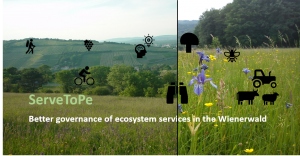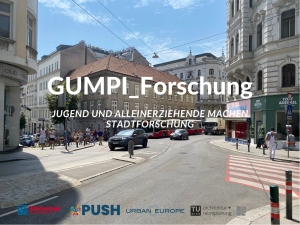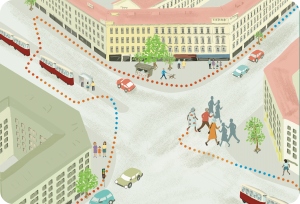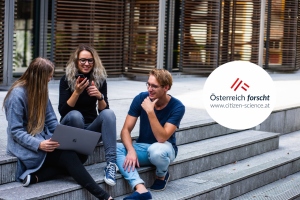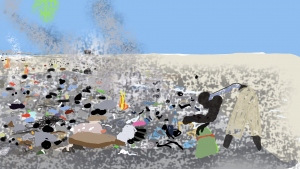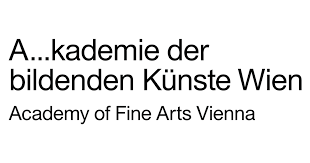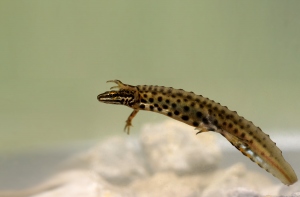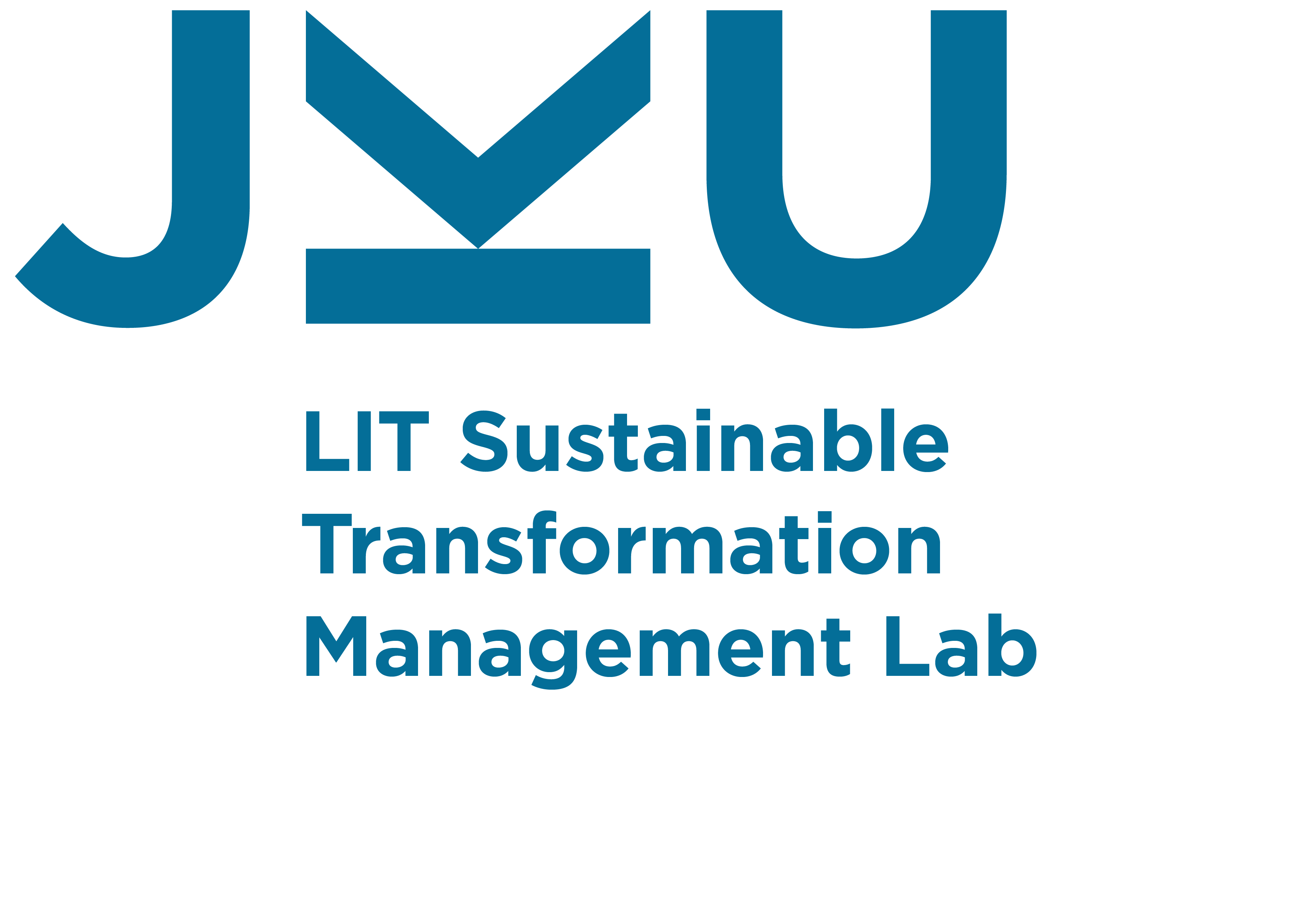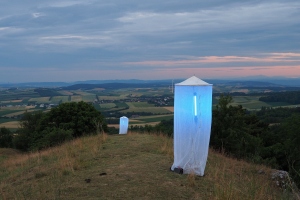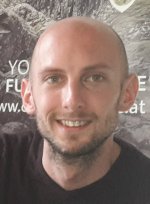
Florian Heigl
ServeToPe
Better governance of ecosystem services at local scales in the Wienerwald region
A joint research project of the University of Natural Resources and Life Sciences, Vienna (BOKU) and the University of Vienna.
What is ServeToPe studying and what are its goals?
Society uses a variety of services that natural ecosystems provide, such as clean water, an attractive landscape for recreational purposes, food, or renewable energy sources. Many of these so-called ecosystem services (ESS) are influenced by humans. These include, for example, agricultural activities or the construction of roads. As a consequence, society regulates human actions and thus indirectly the availability of ESS. Examples of such policies are agri-environmental programs or local land use planning.
The Citizen Science project ServeToPe develops methods to better quantify the demand for ESS and their availability in a landscape. ServeToPe thus aims to contribute to more sustainable management of ESS and more targeted policies that focus on people's needs. ServeToPe is thereby based in the biosphere reserve Wienerwald as a case study region.
ServeToPe mainly aims to answer the following research questions.
- What is the current demand for ESS and to what extent can the Wienerwald region satisfy this demand with the offered ESS?
- What does "good management" mean from the citizens' point of view? How can policies contribute to a convergence of demand for ESS and their supply?
ServeToPe will reveal mismatches between the demand for ESS and their supply and will propose countermeasures. An example of this could be regional conservation efforts specifically planned for the landscape.
What methods are used?
ServeToPe uses a variety of methods to answer the research questions and to involve as many and as diverse citizens as possible. For example, workshops were held in schools or with citizens from the region. All citizens can participate online via a survey (see below). On the project website you can find more information about the methods and the roles of citizens (in German).
How can I participate?
Citizens are important research partners in ServeToPe. In particular, they support the visualization and quantification of the demand for ESS and of conflicting goals and trade-offs of between different ESS. A trade-off exists, for example, when several citizens want to use the same area for different purposes resulting in conflicts (e.g. recreational use and food production). You as citizen can therefore make an important contribution to the research project by participating in the following anonymous surveys.
In the main survey you can (1) enter your own activities and uses of ESS in the Wienerwald, (2) enter and locate frequently observed activities and ESS uses, and (3) identify trade-offs and opportunities for improvement. You can also upload pictures for this purpose. The main survey can be filled in only once.
However, you can also participate more regularly and thereby support ServeToPe even more intensively. This is possible via a second short survey, where you can enter and locate observed activities and ESS uses, as well as trade-offs. A picture upload is also possible here. In this short second survey, you can participate repeatedly over the entire duration of the project - i.e. continuously enter your observations. This gives us an even more accurate representation of uses and activities. You as a citizen scientist gain the opportunity to locate multiple uses and activities in areas and therefore identify multiple and more accurate trade-offs and improvements.
What happens to these results?
The results from the surveys of activities, uses, and trade-offs in the Wienerwald are compiled by the BOKU Vienna and University of Vienna research team and compared with other data on the supply of ESS (see methodology). These results are then published on the ServeToPe website. You can also sign up in our contact form to receive the results via email.
Afterwards, the results are presented to stakeholders from the region (e.g.: Employees of the administration, representatives from agriculture, nature conservation, recreational use, education and regional management) in a workshop. In this workshop, solutions and countermeasures will be developed based on the identified trade-offs and conflicts due to differences in ESS supply and demand.
If you have any questions, please contact Katrin Karner (This email address is being protected from spambots. You need JavaScript enabled to view it.) without hesitation.
The project team
ServeToPe is led by Martin Schönhart (This email address is being protected from spambots. You need JavaScript enabled to view it.) and Katrin Karner (This email address is being protected from spambots. You need JavaScript enabled to view it.), from the Institute for Sustainable Economic Development at BOKU University. Furthermore, the project team includes Thomas Wrbka (This email address is being protected from spambots. You need JavaScript enabled to view it.) and Florian Danzinger (This email address is being protected from spambots. You need JavaScript enabled to view it.) from the Department of Botany and Biodiversity Research at the University of Vienna. In addition, the students of the course " Conservation Related Methodologies of Social, Cultural and Economic Sciences" of the University of Vienna are involved in the project. If you have any questions, please contact Katrin Karner (This email address is being protected from spambots. You need JavaScript enabled to view it.) without hesitation.
This project fulfils version 1.1 of the quality criteria for citizen science projects on Österreich forscht.
GUMPI
Youth and single parents doing urban research
About the project
The climate crisis repeatedly exposes existing weaknesses in democratic practice. On the one hand, groups that are most affected by the consequences of climate change are often underrepresented in the prevailing political and planning practice (participation crisis). On the other hand, social inequality and the exclusion of people from political decision-making processes increases the loss of trust in political decision-makers and institutions (democracy crisis). Therefore, dealing with the consequences of the climate crisis in research and planning cannot be done without looking at ecological and social justice. Who can have a say in crises and help develop solutions? Who suffers most from the consequences of the crises and who does urban development reach?
What is the aim of the project?
The project aims to explore possible applications of Citizen Social Science (CSS) in urban development, especially regarding the potential of involving usually underrepresented groups. The central research interest is to identify to what extent CSS can complement transformation processes, such as the redesign of a street space in an urban context, with the perspectives of marginalized groups. For this purpose, two Citizen Science experiments will be conducted with two selected groups using the participation process "zukunftsfitte Gumpendorfer Straße" in Vienna's 6th district: Single parents and students. The results of these CSS Experiments will help to understand how vulnerable groups can be better represented in transformation processes of urban development leading to environmental and social justice.
What happens with the results?
The project is gathering experience on how to involve marginalized groups in urban development transformation processes through CSS activities. Based on this experience, recommendations for the implementation of CSS in urban development will be developed regarding process design and application of methods.
Based on the perspectives of two marginalized groups, complementary knowledge bases are generated for the transformation of the Gumpendorfer Straße. This knowledge will be handed over to the planning office PlanSinn, which is implementing the participation process for the redesign of Gumpendorfer Straße in a bidding consortium with CarlaLo on behalf of the district.
How can I participate?
The project structure is divided into two dialog groups: single parents and students. The participation for the group of single parents is open to single parents in Vienna who regularly visit the area of Gumpendorfer Straße. Participation is possible at our website.
The group of students will be approached directly by the project team through interested teachers at different schools in Mariahilf. Information on the progress of the project will be published on the website of the TU Wien Library.
Who is behind the project?
The project part on the group of single parents is led by Tamara Bauer, who is currently writing her diploma thesis at the future.lab Research Center of the Vienna University of Technology.
The project part on the group of students is led by Sebastian Harnacker, project staff member at the TU Wien Library. The project will be carried out in cooperation with partners from the participation and transformation process.
The project is part of the research project "OPUSH" at the TU Wien. The aim of the international research project "OPUSH" is to make knowledge about sustainable development visible and accessible to local communities. Project partners from the four European cities of Barcelona, Delft, Tallinn and Vienna are conducting research together with citizens; libraries and other local cultural institutions are playing a mediating role.



This project fulfilled version 1.1 of the quality criteria for citizen science projects on Österreich forscht.
Urban Heat Stories
What are Urban Heat Stories?
It will get hotter and hotter in the city over the next few years. The impact of heat can vary greatly from neighborhood to neighborhood. It depends not only on the building density or the degree of sealing in the city, but also on the age and state of health of the people and their immediate living environment.
The Urban Heat Stories research project therefore collects individual heat experiences of vulnerable groups in Vienna. The aim is to make the diverse concerns and demands of city dwellers visible.
The aim is also to develop a chatbot pilot. It should provide insights into the social dimension of heat at city level. On this basis, recommendations for sustainable urban development in the face of rising temperatures can be expanded to include a social dimension, thus integrating the needs of vulnerable groups into planning in the long term
How does Urban Heat Stories work?
The main cooperation partners are the city's residents. In a two-part workshop, they first map their locations in the public space around their homes. The temperatures of the localized places are investigated using mobile sensors in a joint perceptual and exploratory walk. The measured temperatures are compared with the personal perception of heat. This provides a basis for discussion of the Urban Heat Stories. These stories are the foundation for the development of the new chatbot pilot on heat perception in the city.
How can I participate in the research?
Starting in September 2023, four workshops with senior citizens as Citizen Scientists have taken place around Quellenplatz (10th district, Vienna). The format is to be continued in spring/summer 2024 in other districts with other target groups. A first chatbot pilot will additionally be launched in winter 2024.
Upcoming events:
- Urban Heat Stories at the Citizen Science Day at the Natural History Museum Vienna: As part of the Citizen Science Day (06.04.2024, NHM Vienna), interested citizens will have the opportunity to learn about the project, share their own stories and measure temperatures with us. We are looking forward to your visit!
- Citizen Science Award 2024: We are delighted to have been selected as one of eight projects for the Citizen Science Award 2024. Workshops with schools will take place between April and July 2024. Details on how to register at: www.youngscience.at/csa.
If you are interested in conducting a Citizen Science research on heat experiences (e.g. workshop participation, chatbot test) in your neighborhood, we would also be pleased to receive a short initiative mail.
Podcast episode
As part of the episode "The Citizen Science Award 2024 - behind the scenes", Sebastian Harnacker presented the project in the podcast Wissen macht Leute. You can listen to the episode on our blog or on the podcast app of your choice (the episode is in German). You can find all the details here.
Blog Post on the Award-Winning Completion of the Project
The project 'OPUSH – Citizen Science Pilot Urban Heat Stories' was honored with the "CliA – Österreichischer Staatspreis für Klimawandelanpassung": https://www.citizen-science.at/blog/tu-wien-gewinnt-oesterreichischen-staatspreis-fuer-klimawandelanpassung-clia (Blogpost in German)
What happens with the results?
The findings will provide the basis for recommendations in urban planning and will be incorporated into current Viennese planning projects (e.g. WienNeu+, 10th district). They will also be published on the website of the future.lab Research Center of TU Wien. For participants - as co-researchers - the results will also be made available free of charge as a print edition.
Who is responsible for the project?
The project team consists of researchers from the future.lab Research Center and TU Wien Bibliothek as well as residents as citizen scientists. Urban research does not take place in a laboratory, but together on site. Residents contribute their experiences and interests.
The project is being implemented - as part of the European research project "OPUSH" - in close cooperation with the partner project Heat Chronicles (Cròniques de la Calor) of Open Systems at the Universidad de Barcelona. There is cooperation at local level with the City of Vienna (MA 22, MA 25, GB*), the Vienna Chamber of Labor and the Natural History Museum.
What roles are there in the project?
- The transdisciplinary project team is made up of the research group of the future.lab Research Center and the TU Wien Bibliothek. The TU Wien Bibliothek can draw on experience in the fields of big data and urban heat, among others.
- The residents participate as citizen scientists in the development of content for the Chatbot and are central to the collection of data in the form of micro-stories.
- The Natural History Museum is involved as a local stakeholder with extensive experience with citizen science experiments.
- Local project partners are also the municipal departments of the City of Vienna MA 21 and MA 22 (expertise and meteorological background data), the Vienna Chamber of Labour (e.g. social space monitor), OpenKnowledgeMaps (data visualization) and Wunderbyte (chatbot programming).


This project fulfils version 1.1 of the quality criteria for citizen science projects on Österreich forscht.
Blog
News from the projects, information on citizen science and the opportunity to join in the discussion - this and more awaits you on the Österreich forscht blog.
On our blog you will find a lot of information about project presentations, summaries of the latest project results or events in the context of citizen science in Austria. But there is also room for interviews, opinions and help on the blog. Some projects and research institutions have their own team blogs on Österreich forscht, where you can see all updates of these projects or research institutions at a glance.
We are pleased about the numerous contributions of different authors who deal with topics from the most diverse disciplines and thus also reflect the diversity of citizen science. So you will find a colourful mix of different contributions in the blog.
As the blog is a central communication and information tool of the Austrian citizen science community, it is unfortunately only available in German. However, we cordially invite you to browse through the blog with a translation software of your choice.
Writing history: Letters 1920–1934
What is the project about?
The crowdsourcing project "Letters 1920-1934" is about the transcription of the unique letter collection of the Vienna City Library from this period. In contrast to historical printed works, which are now subjected to automatic full-text recognition as standard, this is still not so easy to do for manuscripts - especially when the documents come from many different writers, as in this case. Since the democratization of knowledge plays a central role in the range of tasks of the Vienna City Library and the pilot project "Letters 1914-1919" has been a great success, we are again asking the crowd for help in indexing the content.
The Vienna City Library will digitize all correspondence - more than 200,000 items - by 2025 and make them freely available in the Digital Library in compliance with copyright law. Due to the alphabetical approach, the crowdsourcing project's holdings will successively expand up to the letter Z.
How can one contribute?
Participation is open to all interested persons. After registering, you can choose between two tasks: Transcribe letters or check letters already transcribed by others. If errors are discovered, they can be changed and a new version created. Three independent confirmations are necessary for a transcription to be classified as correct.
What happens to the results?
The finished transcriptions are integrated into the Digital Library of the Vienna City Library at regular intervals and can then be retrieved and searched at any time. This makes the contents of the letters accessible to all interested persons - something that was previously reserved for a limited circle of experts.
Crowdsourcing platform crowdsourcing.wien
The project "Letters 1920-1934" is part of the crowdsourcing platform crowdsourcing.wien – a cooperation of Wien Museum and Vienna City Library. The aim of this joint platform is to make original sources on the history of Vienna from various institutions accessible to all interested persons with the help of the crowd. Because only knowledge that can be read and comprehended can be brought to life and made available for inclusive debate.
More information: crowdsourcing.wien
Podcast episode
In July 2023, project coordinator Alexandra Egger was guest on the Österreich forscht podcast Wissen macht Leute - you can listen to the episode here (in German).
Picture gallery:
-
 Letter from Maria Herz to Elise Richter, 21.6.1921, HIN-108648, Vienna City Library Letter from Maria Herz to Elise Richter, 21.6.1921, HIN-108648, Vienna City Library
Letter from Maria Herz to Elise Richter, 21.6.1921, HIN-108648, Vienna City Library Letter from Maria Herz to Elise Richter, 21.6.1921, HIN-108648, Vienna City Library -
 Letter from Marianne Hainisch to Rudolf Beer for the Austrian Mother's Day Committee, May 1932, HIN-116120, Vienna City Library Letter from Marianne Hainisch to Rudolf Beer for the Austrian Mother's Day Committee, May 1932, HIN-116120, Vienna City Library
Letter from Marianne Hainisch to Rudolf Beer for the Austrian Mother's Day Committee, May 1932, HIN-116120, Vienna City Library Letter from Marianne Hainisch to Rudolf Beer for the Austrian Mother's Day Committee, May 1932, HIN-116120, Vienna City Library -
 Letter from Josef Jarno to the management of the German Volkstheater [Rudolf Beer], 2.12.1927, HIN-116144, Vienna City Library Letter from Josef Jarno to the management of the German Volkstheater [Rudolf Beer], 2.12.1927, HIN-116144, Vienna City Library
Letter from Josef Jarno to the management of the German Volkstheater [Rudolf Beer], 2.12.1927, HIN-116144, Vienna City Library Letter from Josef Jarno to the management of the German Volkstheater [Rudolf Beer], 2.12.1927, HIN-116144, Vienna City Library -
 Letter from Marie Eugenie delle Grazie to Adele Strauß, 27.12.1920, HIN-120252, Vienna City Library Letter from Marie Eugenie delle Grazie to Adele Strauß, 27.12.1920, HIN-120252, Vienna City Library
Letter from Marie Eugenie delle Grazie to Adele Strauß, 27.12.1920, HIN-120252, Vienna City Library Letter from Marie Eugenie delle Grazie to Adele Strauß, 27.12.1920, HIN-120252, Vienna City Library -
 Letter from Rudolf Goldscheid to Rosa Mayreder, 29.7.1928, HIN-120387, Vienna City Library Letter from Rudolf Goldscheid to Rosa Mayreder, 29.7.1928, HIN-120387, Vienna City Library
Letter from Rudolf Goldscheid to Rosa Mayreder, 29.7.1928, HIN-120387, Vienna City Library Letter from Rudolf Goldscheid to Rosa Mayreder, 29.7.1928, HIN-120387, Vienna City Library -
 Letter from Marianne Hainisch to Rosa Mayreder, 11.2.1933, HIN-121134, Vienna City Library Letter from Marianne Hainisch to Rosa Mayreder, 11.2.1933, HIN-121134, Vienna City Library
Letter from Marianne Hainisch to Rosa Mayreder, 11.2.1933, HIN-121134, Vienna City Library Letter from Marianne Hainisch to Rosa Mayreder, 11.2.1933, HIN-121134, Vienna City Library -
 Letter from August Heymann to Artaria and Compagnie, 5.6.1921, HIN-76007, Vienna City Library Letter from August Heymann to Artaria and Compagnie, 5.6.1921, HIN-76007, Vienna City Library
Letter from August Heymann to Artaria and Compagnie, 5.6.1921, HIN-76007, Vienna City Library Letter from August Heymann to Artaria and Compagnie, 5.6.1921, HIN-76007, Vienna City Library -
 Letter from Franz Eichert to Marie Eugenie delle Grazie, 31.10.1920, HIN-89136, Vienna City Library Letter from Franz Eichert to Marie Eugenie delle Grazie, 31.10.1920, HIN-89136, Vienna City Library
Letter from Franz Eichert to Marie Eugenie delle Grazie, 31.10.1920, HIN-89136, Vienna City Library Letter from Franz Eichert to Marie Eugenie delle Grazie, 31.10.1920, HIN-89136, Vienna City Library
https://www.citizen-science.at/en/component/k2/author/934-florianheigl?start=60#sigProIdd57757c8f5
This project fulfils version 1.1 of the quality criteria for citizen science projects on Österreich forscht.
Salon of Open Secrets
It is an open secret that hardware operating on our smart devices contains not only plastic, but also conflict materials such as tungsten, tin, tantulum and gold. Technology is therefore not neutral. These resources are mined in conflict regions, assembled to electric circuits under harmful labour conditions and mostly ending up in contaminating landfills. This pollution is best understood as an enactment of ongoing colonial relations to Land.
Arts-based research methods seize artistic practice to unpack complexity. Through opening up our artistic research project to citizens we want to make this phenomenon tangible. Intersecting Art and Science needs to be an experience of empowerment, of encouragement to find new ways.
This Citizen Science projecttackles sensitive issues through an online game that introduces the player to alternative technologies. Participants in our workshops (at the Technisches Museum Wien, the Academy of Fine Arts Vienna children’s university, Maker Fair Vienna and three Viennese schools) can become players and navigate through different scenes to meet specific characters as avatars. These avatars represent real people from around the world, collaborators in our main research project. Through this form of interactive storytelling young people are invited to become inventors of green and fair hardware themselves, to network among each other and transform their ideas into actual prototypes in the next phase of the project.
Through the term Ethical Hardware we want to describe technology that does not harm the environment, but embraces restorative practices for the benefit of nature and inhabitants alike.
There are strong social movements among teenage, female* and non-binary creatives who share similar values (Extinction Rebellion, Fridays For Future). Our Citizen Science Project addresses the lack of communication between academia and the youth movement. We would like to explore the creativity and transformative work performed by young citizens, specifically from minorities, by offering a playful entry point to our research. We hope that the visions contributed by CSs will transform our theoretical definition of what imagining future technologies entails, and vice versa give participants the chance to discover alternative futures. This way together we hope to gain the necessary strengths to face this crisis.
Our research team composed by artists researchers Stefanie Wuschitz and Patrícia J. Reis at the Academy of Fine Arts in Vienna and the citizen scientists will together with the Technisches Museum Wien (TMW), our national research partner, make the research results operative for use in classrooms and after school programs.
This project fulfils version 1.1 of the quality criteria for citizen science projects on Österreich forscht.
Friends of the Garden
From alpine crested newt to sand lizard - gardening enthusiasts report please
Private gardens not only provide a place of peace and relaxation for humans but can also serve as important habitats and stepping stones for many animal and plant species. Especially the two endangered species groups of amphibians and reptiles can benefit from a garden designed with nature in mind. However, occurrences of common tree frogs, smooth newts, common lizards, and other species in residential areas are comparatively poorly documented. Reports from garden owners can fill knowledge gaps and contribute to the exploration of the herpetofauna. For this reason, the Austrian Society for Herpetology (ÖGH) annually invites people throughout Austria to participate in the campaign “Von Alpenkammmolch bis Zauneidechse – Gartenfreunde bitte melden“. Observations from one's own garden, school or community gardens are welcome. This year, the campaign will take place from May 8th to 14th, 2023. Observations can be submitted via the platforms naturbeobachtung.at, inaturalist.at, or herpetofauna.at. Incoming reports will be verified by experts, and the reporters will be contacted in case of misidentification. The collected data will then be transmitted to the herpetofaunistic database of the Herpetological Collection of the Natural History Museum in Vienna (HFDÖ) and thus will be available for research and nature conservation in the future.
What happened so far
In the past two years, over 200 occurrences of amphibians and reptiles were reported, with over 1000 individuals from 22 species. On average, two observations per garden were submitted. Although all states were represented, most of the reports came from Lower Austria. The most common reptile species were slow worm, common lizard, and grass snake, while the smooth newt was the most frequently observed amphibian species, followed by the common toad and the group of water frogs. A brief summary of the previous years can be found in the ÖGH-Aktuell issues 59 and 62.
This project fulfils version 1.1 of the quality criteria for citizen science projects on Österreich forscht.
Update Social
With your ideas towards a innovative social sector for all
Our society is facing numerous social challenges and the public administration, charities & social service providers, civil society and (social) enterprises are already working to solve them. In the face of increasingly complex challenges, there is a need for more collaboration and dialogue across sectors. Together we can achieve more!
UpdateSocial is designed to provide the framework for collaboration!
In all sectors of our society, there are people who either already have an idea for solving a challenge or want to develop new approaches (e.g. new products, social services). With UpdateSocial, we bundle the innovative power of all sectors and create a breakthrough together. We thus combine the wealth of ideas of civil society with the implementation power of charities and public administration.
To begin with, we (you and I, and many people from different sectors) come up with ideas and approaches to solutions for the previously defined social challenges in a collaborative 48 hour “Ideenwerkstatt” (Ideation Lab). A support program (Accelerator Program for approaches to solutions to social challenges) will accompany the further development of these approaches to make them ready for collaboration with piloting and scaling partners such as Volkshilfe Upper Austria, other social service providers or public administration.
ALL are called to participate. Co-creative, local and digital.
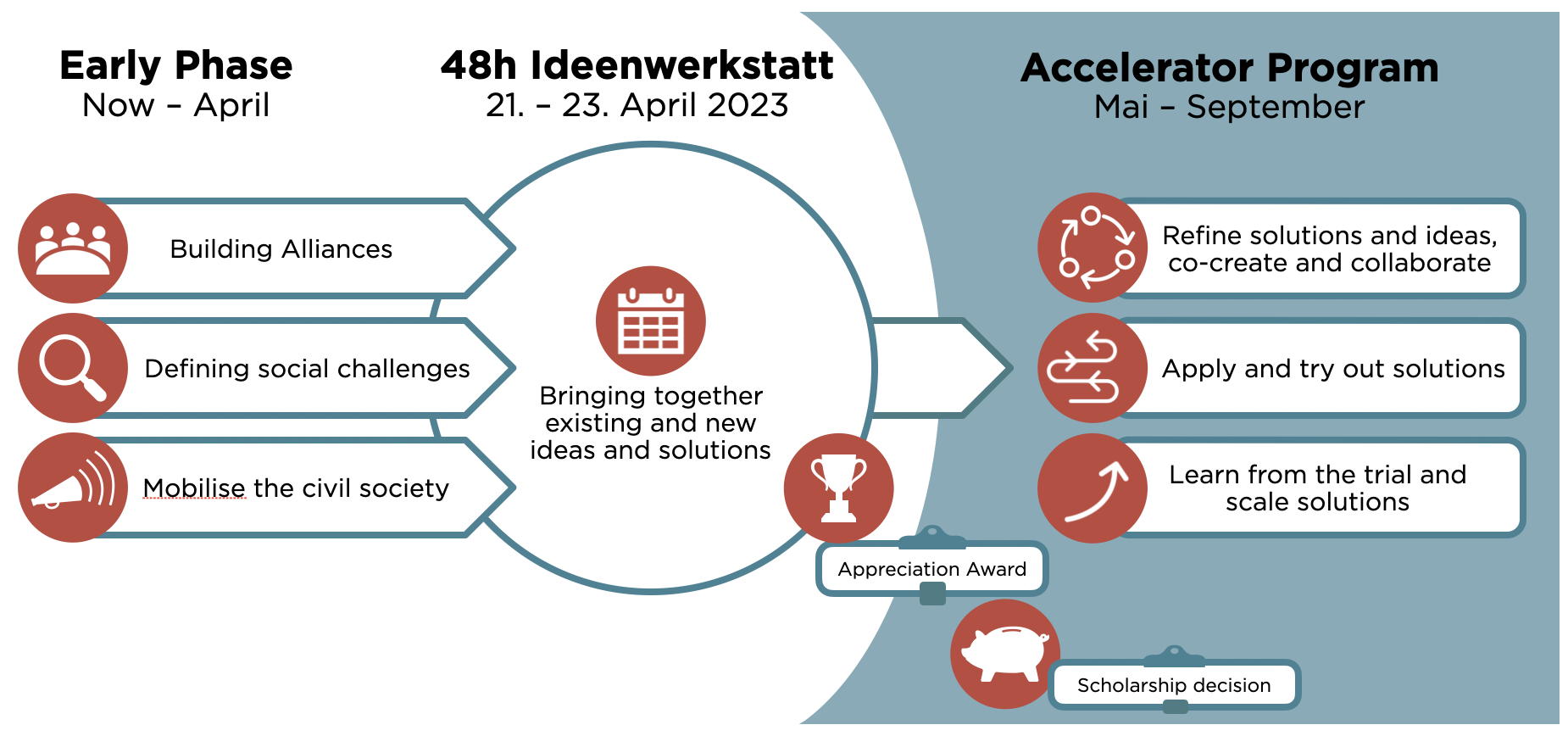
Join the update of the social sector by citizens for citizens!
Together we can drive innovative solutions and strengthen the community for social innovations in Upper Austria.
Role as participant:
Become part of the community of makers, benefit from a public-supported, collaborative and solution-oriented cooperation, help to develop new solutions for the social challenges of our time or commit yourself to take it to the next level with your idea. Curious? Then visit us at https://updatesocial.org/mitmachen/.
Role as mentor / ambassador / implementation partner:
- Support the participants with your knowledge and network. Work with the community at eye level and contribute to a livable future for all.
- Join us in calling on all citizens in Upper Austria and everyone who wants to come to participate in the 48h “Ideenwerkstatt” (Ideation Lab). Whether it's a newsletter or social media - anything works and helps us.
- Do you know other role models who stand for change? Invite them to become part of UpdateSocial.
If you are interested, please contact This email address is being protected from spambots. You need JavaScript enabled to view it..
These partners are already part of UpdateSocial: https://updatesocial.org/team/#partner.
Our mission
With UpdateSocial we want to strengthen the social innovation ecosystem in Upper Austria. The core element of this ecosystem is a strong and transformational community in which there is trust in each other. Thus, this initiative serves as the basic building block for an organically growing movement that drives the digital and green transformation of the social service sector.
How does UpdateSocial work?
Form alliances and define challenges
- We form alliances with leading actors from all sectors to pool everyone's innovative power and foster collaboration.
- The focus is on social challenges that need to be solved. Together with key players in public administration (Land OÖ - Upper Austrian provincial government, Stadt Linz) and with the expertise of Volkshilfe Upper Austria, we identify relevant social issues that we address to civil society.
Mobilizing civil society and (further) developing solutions
- Through an open call at the beginning of March, civil society is to be mobilized for UpdateSocial. Thus, a community will be built to advocate for a sustainable social service sector.
- In mid-April (21. - 23. April 2023), the 48h “Ideenwerkstatt” will take place, where existing and new solution approaches for the identified challenges will be developed. Selected solutions will then be awarded by a jury in diverse categories.
Supporting and scaling ideas with potential
- Initiatives can apply for a support program after the “Ideenwerkstatt” (until 04. April 2023). This starts at the beginning of May (10. Mai 2023) and helps the teams to further develop their solutions through e.g. expert inputs, community meetings and the help of mentors.
- Following the support program, the pilot program will start in October 2022. On October 3, 2023, the project groups will have another opportunity to present their solutions at the Community Celebration. Joint successes will be celebrated, the next steps will be targeted, and the future of the social innovation community will be shaped. What works will be piloted with united strength, e.g. with the help of an implementation partner from our network for social innovation.
Derive and process insights
- Throughout the process of UpdateSocial, which is funded as a scientific project by the Ludwig Boltzmann Gesellschaft, we are collecting insights for a comprehensive "Learning Report" for shared learning on the one hand and for basic research of Open Social Innovation on the other hand.
More information about the project can be found here:
- https://updatesocial.org
- https://updatesocial.org/linktree/
- https://ooe.orf.at/stories/3200196/
- https://www.linkedin.com/company/updatesocial/
- https://www.instagram.com/updatesocial_ooe/
https://www.citizen-science.at/en/component/k2/author/934-florianheigl?start=60#sigProIdea3ccad175
This project fulfils version 1.1 of the quality criteria for citizen science projects on Österreich forscht.
Maria Peer Award
We at Österreich forscht also congratulate Maria Peer on her well-deserved award: https://www.citizen-science.at/blog/auszeichnung-fuer-die-masterarbeit-von-maria-peer
ABOL-BioBlitzes
The lack of sustainability in human activity is leading to the global destabilisation of our natural systems. The resulting biodiversity and climate crises require a transformation to an environmentally sustainable society. However, the expertise in the field of taxonomy required for this transformation is often only shared by a few experts. This leads to a bottleneck in biological species knowledge, where, depending on the group of organisms, often only a few citizen scientists have the expertise to identify species. The ABOL-BioBlitzes have set themselves the goal of making these rare competences available to society.
Correct species identification of organisms is the basis for recording biodiversity and its changes. Traditional identification using morphological characteristics is very time-consuming and requires many years of experience and expertise; as a result, very many species can only be reliably identified by a small number of people. DNA barcoding is an innovative, resource-efficient form of species identification. DNA barcodes are standardised, species-specific DNA sequences from clearly identified individuals and thus serve as comparative references for DNA-based identification. The ABOL BioBlitzes help to populate the "digital identification book" (reference database) on the basis of DNA barcodes. This makes it possible to identify species even from tissue residues, larvae or environmental and mixed samples, such as a water sample from a pond. DNA barcoding helps to better fulfil the increased monitoring requirements (e.g. insect mortality, climate change). Scientists around the world are working on filling the reference database. The ABOL initiative (Austrian Barcode of Life) coordinates the creation of DNA barcode references for animals, plants and fungi that occur in Austria and ensures that this data is made available to the general public. ABOL works together with many national research institutions and private experts and is also networked with European and international initiatives.
With the ABOL-BioBlitzes everyone has the opportunity to help building up this reference database! The ABOL BioBlitzes are (usually) linked to annual "Biodiversity Days", which are organised by national parks, biosphere reserves or associations and take place in various regions of Austria. Biodiversity experts and scientists meet at these events to record biodiversity in a defined area within 24 hours. As part of the ABOL BioBlitz, species are not only documented, but also genetically analysed, i.e. DNA barcodes are created. Tissue samples of organisms that have been collected and identified by experts are handed over to the ABOL team, which initiates the creation of the DNA barcode. The corresponding data is then published in the international open database "Barcode of Life Data System" (BOLD).
The ABOL BioBlitz not only fills the reference database as a basis for future monitoring, but also secures the knowledge acquired by private and institutional experts in the long term. The results of the ABOL BioBlitz are published in a scientific journal approximately every two years, with all participants being able to contribute.
What happened so far
The first ABOL BioBlitz took place in 2019 at the GEO-Tag der Natur in the Biosphere Reserve Nockberge. Since then, 4-6 ABOL-BioBlitzes followed each year throughout Austria. A summary of the results was published in the journal Acta ZooBot with the collaboration of many ABOL BioBlitz participants. Forty experts collected 2,172 individuals or 1,040 species. DNA barcodes of most individuals could be generated and are available to national and international researchers and nature conservation experts in the barcoding reference database BOLD. The results of all previous ABOL BioBlitzes are summarized on the ABOL homepage, where reviews of each ABOL BioBlitz can also be found on the ABOL blog.
If you don't want to miss future ABOL BioBlitzes, you can also subscribe to the ABOL newsletter!
This project fulfils version 1.1 of the quality criteria for citizen science projects on Österreich forscht.

